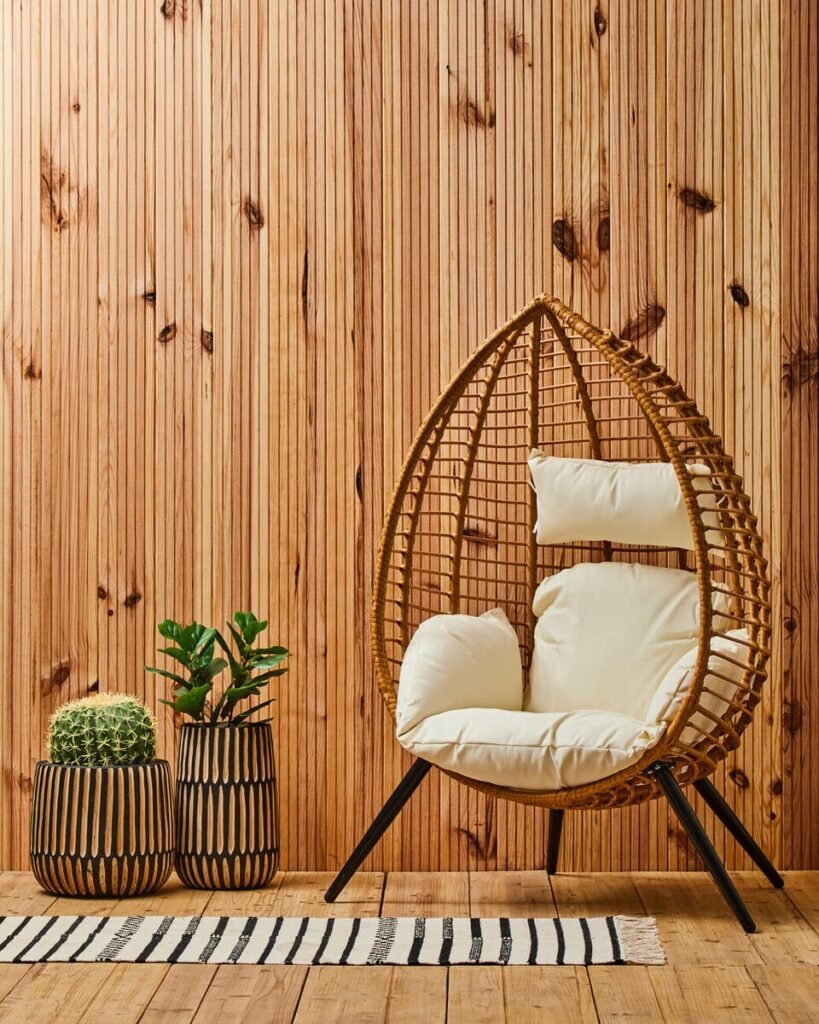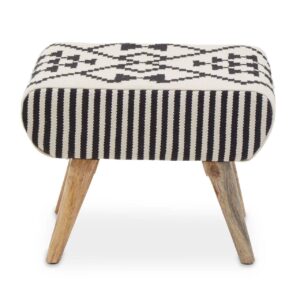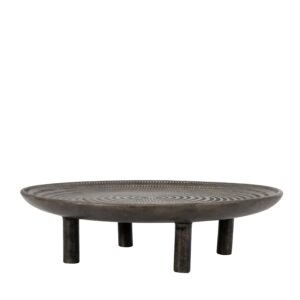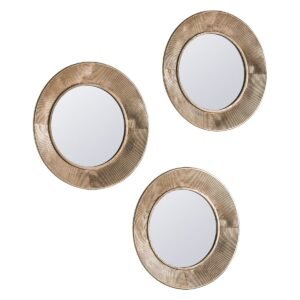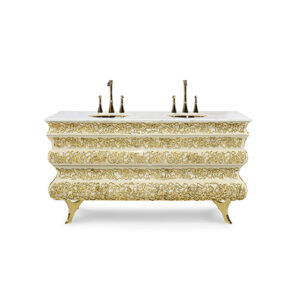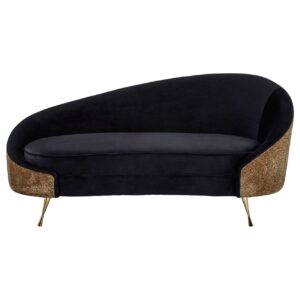Inspiration
INCORPORATING TEXTURE IN INTERIOR DESIGN TO ENHANCE YOUR HOME AESTHETICS
Unveil Luxury, Unleash Comfort – Eclectic Niche.
Imagine walking into a beautifully designed room. The colors are perfect, the furniture is stylish, but something feels missing. That “something” is likely texture. In the context of interior design, texture refers to both the visual and tactile qualities of surfaces within a space. From the rough grain of weathered wood to the smooth sheen of polished metal, texture adds depth, character, and sensory appeal to our surroundings. It’s not just about how things feel; it’s also about how they look and how they influence the overall feel of a room. This article will delve into the world of texture in interior design, exploring its different types, its impact on a space, and how you can use it to create your own unique and inviting home. companions have earned a revered status in our homes, offices, and urban environments.
The practice of indoor gardening dates back centuries, with civilizations around the world incorporating plants into their living spaces for both practical and symbolic reasons. Today, indoor gardening has evolved into a thriving trend, fueled by growing awareness of the positive impacts of plants on our physical and mental health.
Definition and Significance of Texture
Texture is a fundamental element in home design that adds depth, character, and sensory appeal to interior spaces. Understanding texture and its significance is key to creating visually engaging and aesthetically pleasing environments that reflect personal style and enhance overall comfort. In this in-depth exploration, we will delve into the definition of texture, its role in creating visual interest and depth, and an overview of different types of texture in home design. Texture refers to the surface quality of materials, finishes, and elements within a space that can be seen and felt. It adds a tactile dimension to interiors, inviting interaction and sensory exploration. Texture is significant in home design for several reasons:
Enhanced Sensory Experience: Textured surfaces engage the senses, creating a more immersive and enjoyable experience within the home. Touching different textures can evoke feelings of comfort, warmth, or excitement, contributing to a holistic sensory environment.
Visual Interest and Variation: Texture adds visual complexity and variation to interiors, breaking up monotony and adding layers of interest. It creates focal points, highlights architectural features, and brings a sense of richness to design compositions.
Personalization and Style Expression: The choice of textures allows homeowners to express their personal style and preferences. Whether it’s a rustic, cozy feel with natural textures like wood and stone or a sleek, modern aesthetic with smooth surfaces and metallic finishes, texture plays a crucial role in defining the overall look and feel of a space.
Emotional Impact: Different textures can evoke specific emotions or moods. Soft, plush textures may create a sense of comfort and relaxation, while rough or rugged textures can add a touch of rugged charm or adventurous spirit to a room.
Role of Texture in Creating Visual Interest and Depth
Texture is a powerful tool for creating visual interest and depth in home design. It also plays a crucial role in shaping the ambiance, visual interest, and overall experience of a space. Its impact extends beyond mere aesthetics, influencing how we perceive and interact with our space. It accomplishes this in several ways:
Adding Dimension: Textured surfaces create visual depth by casting shadows, reflecting light differently, and creating a sense of layering within a space. This depth enhances the overall visual appeal and complexity of interiors.
Creating Contrast: Contrasting textures can highlight key elements, create focal points, and add drama to design compositions. Combining smooth and rough textures, shiny and matte finishes, or soft and hard surfaces creates dynamic visual contrast.
Defining Spaces: Texture can be used to differentiate between spaces within a home. For example, using a textured accent wall in a living room can visually separate it from an adjoining dining area, creating distinct zones while maintaining a cohesive design aesthetic.
Balancing Elements: Texture helps balance design elements by adding visual weight or softness where needed. It can soften harsh lines, break up large expanses of flat surfaces, and create a sense of harmony and rhythm in a room.
- Enhancing Visual Interest: Texture adds depth, dimension, and complexity to interior spaces, creating visual intrigue and capturing attention. For example:
– In a minimalist living room, a textured accent wall made of reclaimed wood adds character and focal point, breaking up the monotony of the clean lines and smooth surfaces.
– Textured throw pillows or rugs in a neutral-toned bedroom introduce subtle variation and tactile appeal, making the space feel inviting and visually dynamic.
Creating Contrast and Balance: Texture allows designers to create contrast and balance within a space, enhancing its visual harmony and cohesion. For instance:
– Pairing smooth, glossy surfaces with rough, matte textures in a kitchen design creates a dynamic interplay of light and shadow, adding visual interest and depth.
– In a contemporary dining room, combining sleek metal chairs with a rustic wooden dining table strikes a balance between modernity and warmth, creating a visually compelling contrast. - Influence on Size Perception: By strategically incorporating texture into a space, designers can manipulate visual cues to create illusions of spaciousness or coziness. For example, vertical textures such as floor-to-ceiling drapes, vertical stripes, or textured wallpaper can draw the eye upward, making the ceiling appear higher and the room feel taller. Conversely, horizontal textures like wide-plank flooring or horizontal paneling can visually widen a space, making it feel broader and more expansive.
- Eliciting Emotional Responses: Texture can evoke emotional responses and set the mood or atmosphere of a space. Examples include:
– A plush, velvet-upholstered sofa in a cozy reading nook exudes comfort, luxury, and relaxation, inviting occupants to unwind and enjoy moments of tranquility.
– In a spa or wellness center, the use of natural textures such as stone, bamboo, and organic textiles creates a soothing, grounding environment that promotes feelings of calmness and rejuvenation. - Adding Tactile Comfort: Tactile textures provide physical comfort and sensory stimulation, enhancing the overall comfort and livability of a space. For example:
– A soft, shaggy rug in a living room or bedroom provides a cozy, plush surface underfoot, inviting occupants to kick off their shoes and relax.
– Textured wallpaper with raised patterns or embossed designs adds tactile interest to walls, transforming them into sensory experiences that engage both sight and touch.
Reflecting Personal Style and Identity: Texture allows individuals to express their personal style, preferences, and identity within a space. Examples include:
– In a bohemian-inspired bedroom, layers of textiles with varied textures such as macramé, woven fabrics, and faux fur reflect the occupant’s eclectic taste and free-spirited personality.
– A sleek, contemporary office with polished concrete floors, glass partitions, and metal fixtures conveys a sense of modernity, sophistication, and professionalism.
Types of Texture
Texture in home design can be categorized into three main types: visual texture, tactile texture, and functional texture. Each type plays a crucial role in enhancing the overall aesthetic and functionality of interior spaces.
A. Visual Texture
Definition and Characteristics: Visual texture refers to the appearance of texture without the physical sensation of touch. It creates a visual illusion of texture through patterns, designs, and surface treatments.
Examples:
- Wallpaper Patterns: Textured wallpapers with embossed patterns, faux finishes mimicking materials like brick, wood, or stone.
- Artwork: Paintings or prints with texture-like brush strokes, impasto techniques, or mixed media elements.
- Printed Fabrics: Fabrics with printed textures such as floral designs, geometric patterns, or abstract motifs.
Visual texture adds depth, interest, and decorative flair to interiors, making spaces visually engaging without altering the physical feel of surfaces.
B. Tactile Texture
Definition and Importance of Tactile Sensations: Tactile texture refers to the physical texture that can be felt and experienced through touch. It adds a sensory dimension to interiors, enhancing comfort, and creating a more tactile and inviting environment.
Examples:
- Textured Fabrics: Fabrics with varied weaves, textures, and surface treatments such as velvet, chenille, boucle, or nubby tweed.
- Wood Grain: Natural wood surfaces with distinct grain patterns, knots, and textures that add warmth and character to furniture and decor.
- Stone Surfaces: Materials like marble, granite, or travertine with textured finishes like honed, polished, or rough-hewn surfaces.
Tactile texture not only adds visual interest but also contributes to the overall sensory experience, making spaces feel cozy, inviting, and luxurious.
C. Functional Texture
Definition and Practical Applications: Functional texture serves a practical purpose beyond aesthetics, addressing specific needs and functionalities within a space.
Examples:
- Slip-Resistant Flooring: Textured flooring materials such as non-slip tiles, textured vinyl, or rubber flooring in areas prone to moisture or foot traffic.
- Textured Countertops: Countertops with textured finishes like honed granite, leathered quartz, or matte surfaces that offer both visual interest and durability.
- Ergonomic Furniture: Furniture with textured surfaces for ergonomic support, such as textured grips on handles, anti-slip features on seating, or textured finishes on work surfaces for better grip.
Functional texture enhances safety, usability, and comfort in interior spaces, making them more practical and user-friendly.
More on Types of Texture
Texture is further classified into various types based on the characteristics, origins, and properties of the materials that comprise each type. They include:
1. Natural Textures: These textures are derived from materials found in nature, such as wood, stone, and leather. They are characterized by their organic origins, unique grain patterns, and tactile warmth. Natural textures evoke a sense of authenticity, connection to the environment, and timeless appeal. Common examples include:
– Wood: Ranging from smooth and polished to rough and weathered, wood textures bring a natural element into interior spaces, creating a feeling of coziness and rustic charm.
– Stone: Whether it’s sleek marble, rugged slate, or textured travertine, stone textures imbue spaces with elegance, durability, and a timeless appeal.
– Leather: Known for its luxurious feel and distinctive grain patterns, leather textures add richness and sophistication to furniture upholstery and accessories.
2. Synthetic Textures: As the name suggests, these textures are man-made and are often created using synthetic materials such as glass, metal, and plastic. Synthetic textures offer versatility, durability, and consistency in design. They can be manipulated to achieve specific aesthetic effects and are often chosen for their modern, sleek appearance.
– Glass: With its smooth, glossy surface and ability to reflect light, glass textures introduce a sense of transparency, modernity, and luminosity to interiors.
– Metal: From sleek stainless steel to industrial corrugated iron, metal textures add a touch of sophistication, sleekness, and industrial chic to various design elements.
– Plastic: While sometimes considered less tactile than natural materials, plastic textures offer flexibility, affordability, and a wide range of colors and finishes suitable for modern design schemes.
3. Fabric Textures: Fabric textures encompass a wide range of materials, weaves, and patterns, each with its unique tactile qualities and aesthetic appeal. From soft cotton and luxurious silk to cozy wool, fabric textures contribute to the comfort, style, and ambiance of interior spaces. They are chosen based on factors such as durability, breathability, and visual impact.
– Cotton: Soft, breathable, and versatile, cotton textures are ideal for upholstery, drapery, and bedding, offering comfort and understated elegance.
– Silk: Luxurious and lustrous, silk textures exude opulence and refinement, making them perfect for accent pillows, curtains, and statement pieces.
– Wool: With its natural warmth, resilience, and texture variations, wool textures add a cozy, tactile element to rugs, throws, and upholstery.
4. Textured Finishes: These textures refer to surface treatments and finishes applied to various materials to enhance their visual and tactile appeal. Textured finishes include matte, glossy, and rough surfaces, each offering distinct aesthetic and functional properties. These finishes are chosen based on the desired aesthetic effect, as well as considerations such as ease of maintenance and durability.
– Matte: Matte textures offer a subtle, understated elegance, providing a soft, non-reflective surface that adds depth and sophistication to walls, furniture, and accessories.
– Glossy: Glossy textures reflect light and create a sleek, polished appearance, adding a touch of glamour and modernity to surfaces such as cabinets, countertops, and tiles.
– Rough: Rough textures, such as exposed brick, textured wallpaper, or distressed wood, infuse spaces with character, depth, and a sense of history, adding visual and tactile intrigue to walls and furnishings.
Understanding and strategically combining these various types of textures allow interior designers to create dynamic, visually engaging spaces that evoke specific moods, reflect personal preferences, and enhance the overall aesthetic appeal of a room.
Importance of Texture in Home Aesthetics
Texture plays a vital role in home aesthetics, contributing to the overall ambiance, comfort, and visual appeal of interior spaces. Understanding the importance of texture allows homeowners and designers to create harmonious and inviting environments that reflect personal style and enhance the overall aesthetic experience.
A. Enhancing Visual Interest and Depth
Texture adds layers of visual interest and depth to interiors, breaking up monotony and creating dynamic focal points. By incorporating different textures, such as rough and smooth surfaces or matte and glossy finishes, spaces become visually engaging and intriguing. The interplay of light and shadow on textured surfaces creates a sense of depth, making rooms feel more expansive and visually captivating.
B. Creating a Sense of Warmth and Coziness
Certain textures, like soft fabrics, plush rugs, and natural materials such as wood or stone, evoke feelings of warmth, comfort, and coziness. Textured elements invite touch and interaction, creating a tactile experience that enhances the overall sense of comfort and relaxation in a space. Cozy textures contribute to creating inviting and welcoming environments, making inhabitants feel at ease and at home.
C. Adding Personality and Character to Spaces
Texture is a powerful tool for adding personality and character to interiors. Different textures convey different moods and styles, allowing homeowners to express their unique tastes and preferences. For example, rustic textures like exposed brick or distressed wood can add a sense of charm and authenticity, while sleek textures like glass or metal convey a modern and sophisticated aesthetic. Texture allows spaces to tell a story and reflect the personalities of those who inhabit them.
D. Influencing Mood and Atmosphere
The choice of texture can significantly impact the mood and atmosphere of a room. Soft, tactile textures promote relaxation and tranquility, ideal for spaces like bedrooms or cozy reading nooks. In contrast, bold and dynamic textures can energize and stimulate, making them suitable for areas like home offices or entertainment spaces. The tactile and visual qualities of texture contribute to shaping the overall ambiance and creating desired atmospheres within different areas of the home.
Impact of Texture on a Space.
Various interior design styles vary in their specific aesthetic preferences and principles. However, texture serves as a unifying element that enhances their overall look and feel, adding character to the space. Incorporating texture into various interior design styles involves selecting materials, finishes, and furnishings that complement the overall aesthetic while enriching and adding drama to the space. Here are some guidelines for incorporating texture into popular interior design styles:
Rustic Style:
– Use natural materials such as reclaimed wood, stone, and exposed brick to add warmth and authenticity to the space.
– Incorporate textural elements like woven baskets, knitted throws, and rough-hewn furniture to enhance the cozy, lived-in feel.
– Embrace imperfect textures and finishes that celebrate the natural beauty of raw materials, such as distressed wood or patinaed metal accents.
Modern Style:
– Opt for sleek, minimalist textures such as smooth surfaces, polished metals, and high-gloss finishes to create a clean, contemporary look.
– Introduce contrast and visual interest through the strategic use of textural accents such as geometric rugs, plush upholstery, and tactile artwork.
– Experiment with innovative materials and finishes, such as glass, acrylic, and resin, to add a touch of sophistication and modernity to the space.
Coastal Style:
– Incorporate natural textures inspired by the seaside, such as rattan, wicker, sisal, and driftwood, to evoke a relaxed, beachy vibe.
– Choose soft, breezy textiles in shades of blue, white, and sand to mimic the colors of the ocean and create a serene, airy atmosphere.
– Layer textures like jute rugs, linen curtains, and nautical-inspired accessories to add depth and dimension to the space while maintaining a casual, laid-back feel.
Industrial Style:
– Embrace raw, utilitarian textures such as exposed brick, concrete, and metal to evoke the gritty, urban aesthetic of industrial spaces.
– Incorporate salvaged or repurposed materials like distressed wood, rusted steel, and weathered leather to add character and authenticity to the space.
– Balance the rough textures of industrial elements with softer, more refined materials such as plush textiles, velvet upholstery, and polished surfaces to create contrast and visual interest.
Scandinavian Style:
– Opt for natural, light-toned wood textures such as birch, pine, and ash to create a sense of warmth and coziness in Scandinavian interiors.
– Keep textures minimal and understated, focusing on clean lines, smooth surfaces, and subtle contrasts to achieve a harmonious, clutter-free look.
– Introduce soft, tactile elements like sheepskin rugs, knit throws, and linen upholstery to add warmth and comfort to the space while maintaining a minimalist aesthetic.
Traditional Style:
– Choose rich, luxurious textures such as velvet, silk, and brocade to evoke the timeless elegance and opulence of traditional interiors.
– Incorporate ornate details and intricate patterns in textiles, wallpaper, and upholstery to add depth and visual interest to the space.
– Mix and match textures such as polished wood, marble, and brass accents to create a sense of refinement and sophistication.
Mid-Century Modern Style:
– Opt for sleek, organic textures such as teak, walnut, and leather to capture the iconic look and feel of mid-century modern design.
– Embrace clean lines, smooth surfaces, and minimalist forms to highlight the beauty of natural materials and craftsmanship.
– Add warmth and visual interest through the use of textural accents such as shag rugs, geometric patterns, and textured upholstery in muted earth tones.
Farmhouse Style:
– Incorporate rustic, farmhouse-inspired textures such as distressed wood, burlap, and galvanized metal to create a cozy, country-chic atmosphere.
– Layer soft, tactile textiles such as cotton, linen, and wool in neutral tones to enhance the comfort and inviting feel of the space.
– Mix vintage and modern elements to add character and charm, incorporating handmade pottery, woven baskets, and weathered finishes for added texture and authenticity.
Art Deco Style:
– Opt for luxurious, glamorous textures such as velvet, satin, and lacquered finishes to capture the opulence and drama of art deco design.
– Embrace bold geometric patterns, mirrored surfaces, and metallic accents to create a sense of luxury and sophistication.
– Incorporate exotic materials such as ebony, marble, and mother-of-pearl to add texture and visual interest, while maintaining a sense of elegance and refinement.
Minimalist Style:
– Focus on clean, uncluttered spaces with smooth surfaces, neutral colors, and minimalist furnishings to achieve a sense of simplicity and tranquility.
– Choose high-quality, tactile materials such as natural stone, concrete, and brushed metal to add subtle texture and visual interest to the space.
– Keep accessories to a minimum and select pieces with clean lines and simple shapes to maintain a sense of balance and harmony in minimalist interiors.
Incorporating Texture in Different Elements of Home Design
Texture is a versatile tool that can be incorporated into various elements of home design to add depth, visual interest, and tactile appeal. By strategically using texture, homeowners can create harmonious and inviting spaces that reflect their style preferences and enhance the overall aesthetic experience.
A. Walls and Surfaces
Textured Wall Treatments: Utilizing paint techniques such as faux finishes, textured paints, or decorative painting methods can add depth and dimension to walls. Wallpaper with embossed patterns or textured panels like beadboard or wainscoting can also create visual interest.
Natural Materials: Incorporating natural materials like stone cladding, exposed brick walls, or wood paneling adds texture and warmth to interior spaces. These materials bring a sense of authenticity and connection to nature, enhancing the overall ambiance.
B. Flooring Options
Textured Flooring: Opting for textured flooring materials such as carpets with varied pile heights, textured rugs, textured tiles with patterns or embossing, or hardwood flooring with visible grain patterns adds tactile appeal and visual interest to floors.
Contrast and Complement: Mixing textures between floors and walls can create a sense of harmony and balance in a room. Contrasting textures, such as smooth walls with textured floors or vice versa, can create visual intrigue and highlight different design elements.
C. Furniture and Decor
Textured Upholstery: Choosing fabrics with varied weaves, textures, and patterns for upholstery adds depth and character to furniture pieces. Leather with natural grain patterns or textured fabrics like velvet, chenille, or tweed enhance the tactile experience.
Decorative Accents: Incorporating textured cushions, throws, and blankets adds layers of comfort and visual interest to seating areas. Textured artwork, sculptures, and decorative objects create focal points and add personality to spaces.
D. Lighting Effects
Playing with Light and Shadows: Textured lampshades, light fixtures with intricate designs, or diffusers with patterns can create captivating light and shadow effects, enhancing the ambiance of a room.
Highlighting Texture: Using directional lighting, such as spotlights or wall-mounted fixtures, to emphasize textures on walls or surfaces adds depth and drama. This technique draws attention to textured elements and creates a dynamic visual experience.
Design Principles and Techniques for Using Texture
Incorporating texture into home design requires a thoughtful approach to ensure visual harmony, depth, and coherence. By understanding design principles and techniques, homeowners can effectively use texture to create inviting and visually engaging interiors that reflect their style preferences.
A. Layering Textures
Mixing and layering different textures adds depth, dimension, and visual interest to interiors. Combining smooth and rough textures, soft and hard surfaces, or matte and glossy finishes creates a dynamic and engaging environment. For example, pairing a plush rug with a textured sofa and adding a metallic accent piece creates a layered and inviting seating area.
B. Scale and Proportion
Balancing textures of varying scales is essential for visual harmony. Large-scale textures, such as stone cladding or textured wallpaper, can be balanced with smaller-scale textures like textured fabrics or decorative accents. Maintaining proportion ensures that textures complement each other rather than compete for attention, creating a cohesive design scheme.
C. Color and Texture Interplay
Exploring the interplay between color and texture influences the perception of texture within a space. Light-colored textured surfaces can create a sense of openness and airiness, while dark-colored textures add depth and drama. Harmonizing color palettes with complementary textures enhances the overall aesthetic appeal and visual impact of a room.
D. Texture in Different Design Styles
Textures play a significant role in defining different design styles, such as rustic, modern, eclectic, and more:
Rustic Style: Emphasizes natural textures like wood grain, stone, and distressed finishes to create a cozy and inviting atmosphere.
Modern Style: Incorporates sleek and smooth textures like glass, metal, and polished surfaces for a minimalist and sophisticated look.
Eclectic Style: Mixes diverse textures, patterns, and materials to create a vibrant and eclectic aesthetic that celebrates individuality and creativity
Emerging Textures in Interior Design
As interior design trends evolve, new textures and materials continue to emerge, offering fresh opportunities for creativity and expression. Some interesting trendy textures include:
- Textured Plaster: Textured plaster finishes, such as Venetian plaster or polished plaster, are gaining popularity for their organic, tactile appeal. These finishes add depth and character to walls and ceilings, with variations in texture achieved through techniques like troweling, burnishing, or layering.
- Terrazzo: Terrazzo, a composite material consisting of chips of marble, quartz, granite, or glass set into a binder, is making a comeback in interior design. Its speckled appearance and varied texture add visual interest and a touch of retro charm to floors, countertops, and decorative objects.
- Biophilic Textures: With an increasing focus on biophilic design, textures inspired by nature are becoming more prevalent. Materials such as reclaimed wood, cork, bamboo, and natural fibers like rattan and seagrass bring warmth, texture, and a connection to the outdoors into interior spaces.
- Textured Tiles: Textured tiles, including 3D tiles, embossed tiles, and patterned tiles, are being used to create statement walls, backsplashes, and flooring surfaces. These tiles add dimension and visual interest, transforming ordinary surfaces into works of art.
- Metallic Textures: Metallic finishes, such as brushed brass, aged bronze, and patinated copper, are being incorporated into interior design to add a touch of glamour and sophistication. These textures can be used in fixtures, furnishings, and accents to create a sense of luxury and elegance.
- Concrete: Concrete finishes, ranging from smooth and polished to textured and raw, are being embraced for their industrial-chic aesthetic and versatility. Concrete can be used for flooring, countertops, and decorative elements, adding a modern, urban edge to interior spaces.
- Velvet and Boucle: Luxurious textiles like velvet and boucle are experiencing a resurgence in popularity, adding softness, texture, and a sense of coziness to furniture upholstery, drapery, and cushions.
- Lacquered Finishes: Lacquered finishes, which offer a glossy, reflective surface, are being used to add drama and sophistication to furniture, cabinetry, and decorative accessories. Lacquered finishes can come in a variety of colors, textures, and sheens, allowing for versatile design possibilities.
Practical Tips for Using Texture.
When using texture in interior design, there are several practical tips to keep in mind to ensure successful integration and a cohesive overall look. Some practical tips for using texture effectively include:
- Consider the Scale and Proportion: Choose textures that are appropriate in scale and proportion to the size of the space and the furnishings within it. Avoid overwhelming small rooms with large-scale textures, and vice versa.
- Create Contrast and Balance: Mix and match different textures to create contrast and visual interest in the space. Balance rough textures with smooth ones, and matte finishes with glossy ones, to achieve a harmonious overall look.
- Layer Textures: Layering textures adds depth and dimension to a space. Experiment with layering textiles such as rugs, throw pillows, and curtains, as well as incorporating textured accessories like baskets, vases, and artwork.
- Think About Lighting Effects: Consider how lighting affects texture within the space. Textured surfaces can create interesting shadows and highlights when illuminated, so strategically place lighting fixtures to accentuate texture and create mood.
- Use Texture to Highlight Focal Points: Draw attention to key focal points in the room by using texture strategically. Consider applying textured finishes or introducing textured elements to walls, ceilings, or architectural features to make them stand out.
- Consider Maintenance: Keep practical considerations in mind when selecting textured materials. Some textures may require more maintenance than others, so choose materials that are easy to clean and maintain, especially in high-traffic areas.
- Be Mindful of Cohesion: Ensure that the textures you choose complement the overall style and theme of the space. Aim for cohesion by selecting textures that work harmoniously together and contribute to the desired aesthetic.
- Experiment with Unexpected Textures: Don’t be afraid to think outside the box and experiment with unexpected textures. Mix traditional and unconventional materials to add a unique twist to your design scheme and create a truly personalized space.
- Consider Sensory Appeal: Texture not only adds visual interest but also enhances the sensory experience of a space. Choose textures that not only look good but also feel good to touch, creating a more inviting and comfortable environment for occupants.
- Trust Your Instincts: Ultimately, trust your instincts and personal taste when incorporating texture into your design. Experiment with different combinations until you find the right balance that resonates with you and achieves the desired look and feel for the space.
In conclusion, texture is a powerful element in home design that transcends mere visual aesthetics. It adds depth, character, and a tactile dimension to interiors, transforming spaces into inviting and engaging environments. By incorporating a variety of textures thoughtfully, balancing scale and proportion, and harmonizing color and texture interplay, homeowners can create personalized and visually captivating spaces that reflect their style preferences and enhance the overall ambiance of their homes.
Texture not only enhances the visual appeal of interiors but also influences the sensory experience, creating feelings of comfort, warmth, and coziness. It plays a crucial role in defining different design styles and contributes to the overall mood and atmosphere of a room. Whether it’s the rustic charm of natural textures, the sleek sophistication of modern surfaces, or the eclectic mix of diverse materials, texture adds richness and personality to interior spaces.

